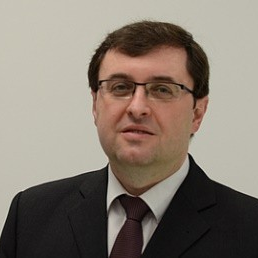State-of-the-Art Sensors Technology in Germany
A special issue of Sensors (ISSN 1424-8220). This special issue belongs to the section "State-of-the-Art Sensors Technologies".
Deadline for manuscript submissions: closed (28 February 2019) | Viewed by 84826
Special Issue Editor
Interests: laser sensing and spectroscopy; integrated polymer optics; fiber-optical sensing; optical technology for illumination; information; the life sciences; digital holography; fiber couplers; multi-physics optical simulations
Special Issues, Collections and Topics in MDPI journals
Special Issue Information
Dear Colleagues,
The demand for sensing, monitoring, or analytic applications has continuously increased over the last decade. This trend is expected to continue in the foreseeable future and powers the quest for novel, highly-functional, and intelligent sensor technology. Whereas research and development in academia and industry were among the first drivers for new sensor concepts, the current broad impact of such systems reaching essentially every domain of modern society is due to their massive dissemination in entertainment and communication devices and their successful application for environmental and production monitoring as well as medical diagnostics, among others.
This Special Issue strives to provide an overview on state-of-the-art sensor technology in Germany, where this field evolved to a highly innovative and dynamic research area. Research articles covering novel, highly-functional and intelligent sensor systems and their applications are invited to contribute.
Individual topics of interest include, but are not limited to:
- Biosensing
- Chemical and physical sensor systems
- Fiber optic sensing
- Surface plasmon resonance sensors
- Acoustic sensing
- Optofluidic systems
- Distributed sensor systems
- Micro-integrated sensor devices
- Sensor arrays, functional networks, smart and interconnected sensors
- Remote sensing
- Applications in production monitoring, quality control and automotive areas
- Virtual reality and augmented reality systems
- Additive manufacturing and industry 4.0 applications
- Structural health monitoring
- Environmental analytics
- Optical metrology
- Medical diagnostics and monitoring
- Ambient assisted living and E-health systems
- Wearable sensor systems
Professor Bernhard Roth
Guest Editor
Manuscript Submission Information
Manuscripts should be submitted online at www.mdpi.com by registering and logging in to this website. Once you are registered, click here to go to the submission form. Manuscripts can be submitted until the deadline. All submissions that pass pre-check are peer-reviewed. Accepted papers will be published continuously in the journal (as soon as accepted) and will be listed together on the special issue website. Research articles, review articles as well as short communications are invited. For planned papers, a title and short abstract (about 100 words) can be sent to the Editorial Office for announcement on this website.
Submitted manuscripts should not have been published previously, nor be under consideration for publication elsewhere (except conference proceedings papers). All manuscripts are thoroughly refereed through a single-blind peer-review process. A guide for authors and other relevant information for submission of manuscripts is available on the Instructions for Authors page. Sensors is an international peer-reviewed open access semimonthly journal published by MDPI.
Please visit the Instructions for Authors page before submitting a manuscript. The Article Processing Charge (APC) for publication in this open access journal is 2600 CHF (Swiss Francs). Submitted papers should be well formatted and use good English. Authors may use MDPI's English editing service prior to publication or during author revisions.
Keywords
- biosensors
- chemical sensors
- physical sensors
- sensor networks
- remote sensors






